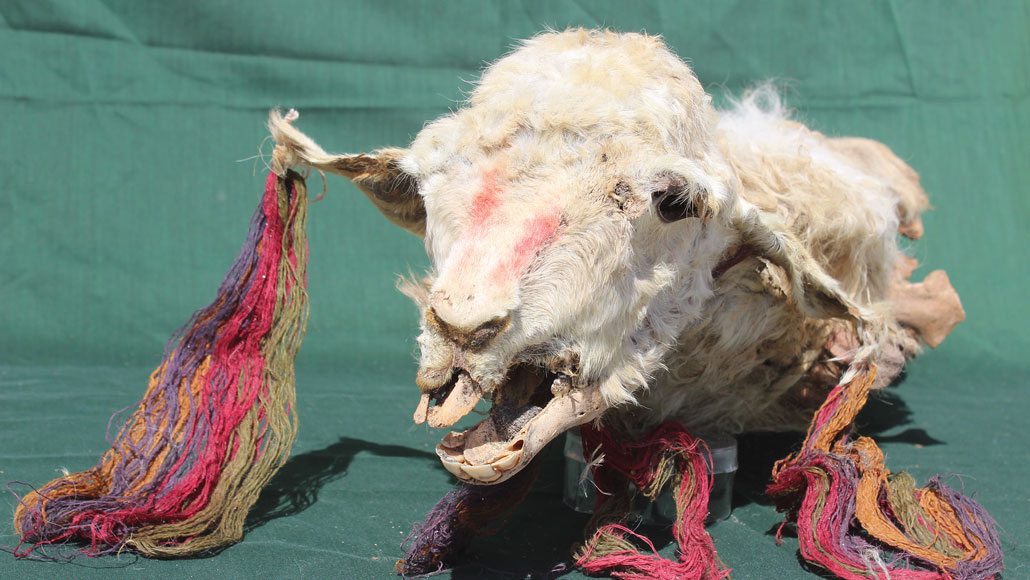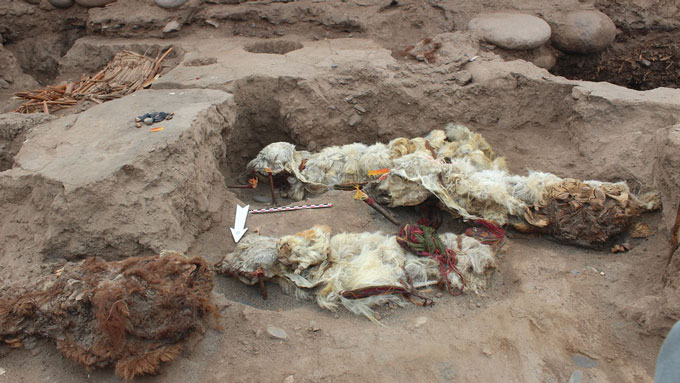Mummified llamas yield new insights into Inca ritual sacrifices
The animals were bound, decorated and probably buried alive

Naturally mummified llamas decorated with colored string, including this one, were sacrificed by the Inca more than 500 years ago as part of a ritual event, scientists say.
L.M. Valdez








